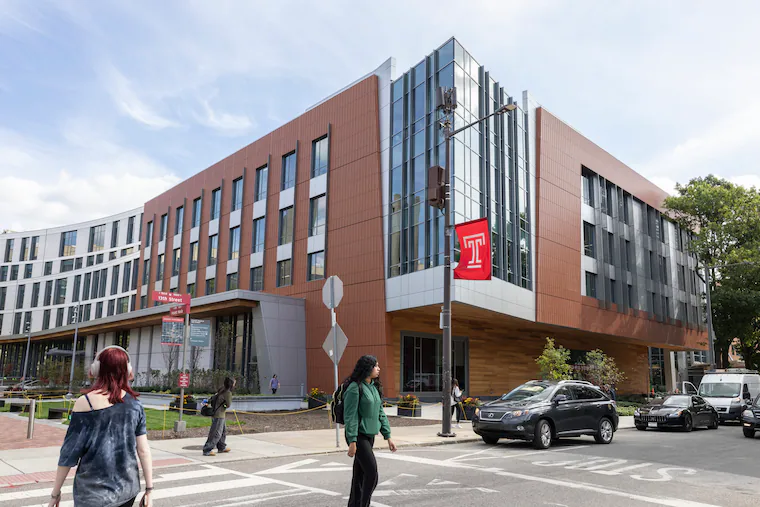Temple’s College of Public Health has a new building where students can stimulate patient interactions in a restaurant, ER, or rowhouse

For years, students at Temple University’s College of Public Health trekked to classes and met professors across two campuses and 10 buildings in North Philadelphia.
That changed this school year when the college finally moved into its own building, the first dedicated to public health since its founding in 1966.
Paley Hall is an expansion and renovation of the former Samuel L. Paley Library, which sat at the heart of Temple’s main campus on North Broad Street.
Jennifer Ibrahim, the college’s dean, spoke with The Inquirer about the new building and amenities designed for public health studies, including a “simulation” space with a replica park, restaurant, emergency room, and even a rowhouse where students can act out interactions with patients. The interview was lightly edited for length and clarity.
About eight years ago, we started the conversations about renovating Paley to become the new home of the School of Public Health. It’s at the center of campus, and public health has so many collaborations with medicine, with dentistry, with public policy, with law, that it felt really special and appropriate, given how collaborative and interdisciplinary we are.
Once Paley Hall was gutted, the beauty of the building was that it was created to hold books — to bear the weight of books. That allowed us to add two more floors and extend an east wing and a west wing, significantly increasing the square footage, and that made the building large enough for our different academic units to move into.
We have so many different disciplines — public health, social work, nursing, speech, physical therapy, occupational therapy, athletic training, recreational therapy. And we have been in as many as 11 buildings over the history of the college on the main campus, but also on the health science campus [further north on Broad Street]. It’s not that far, but it does create challenges for collaboration.
That ability to bump into one another in the same physical space — just having those impromptu conversations brings a warmer human element to the interactions that we have.
There’s a couple of interesting spaces in the building. We have four classrooms in the building, and then we have the Aramark Community Teaching Kitchen, which is a kitchen space with capacity for 24 students to be learning.
The simulation center is at the heart of it. This was a collaboration from faculty across all of our disciplines.
When individuals have an acute injury, or a chronic condition, what we aim to do is get them back into the community and back into their social support system.
So about 40% of our simulation center is a community. There’s an ambulance bay, there’s a park, there’s a restaurant, there’s a corner grocery store, there’s a replica rowhouse, there’s a street, there’s a sidewalk — all of that allows students to practice safely before they go out and work with our community partners, to learn and to receive feedback.
The other half of our simulation center is more traditional. We have an inpatient and an outpatient area where students will be interacting with simulated patients as well as mannequins to help them learn [bedside manner].
We’re really excited for our disciplines to come together and get creative about ways that we can better prepare students for what it’s going to be like when they enter the workforce. We also feel that we have an obligation to our local and regional workforce, that we are putting out the best-prepared students to hit the ground running.
We know that there is an evidence base for what works and what doesn’t work.
We have an obligation to educate the public.
We have an obligation to conduct research to advance the evidence of what we know does and does not work.
We have an obligation to develop policy with our elected officials to figure out what can we do to protect the population in any way that we can.
I think Temple’s investment in this space is a statement about the importance of public health and health professionals more broadly.
Now is the time that we have to double down on our investments in public health, and Temple has done just that.